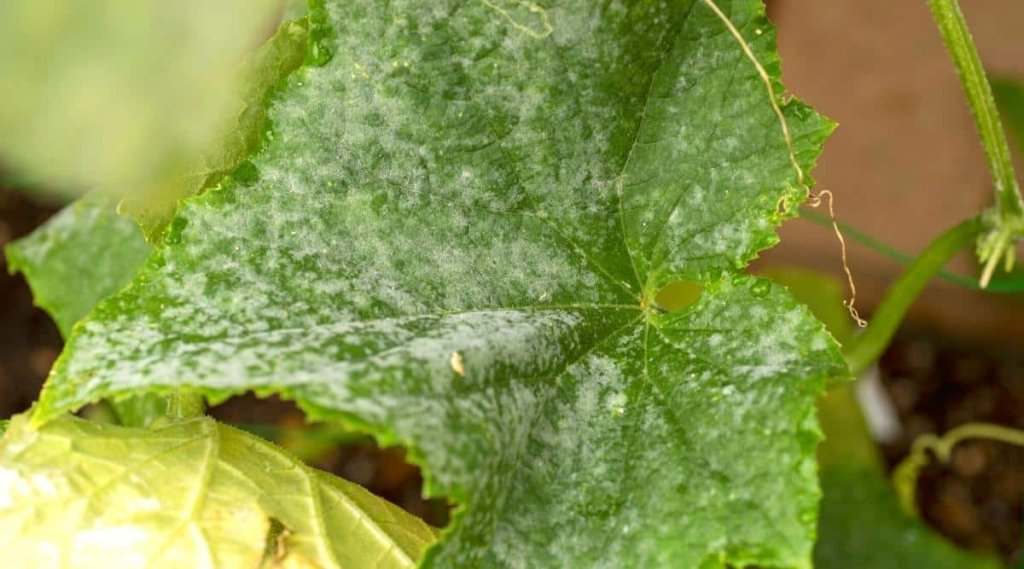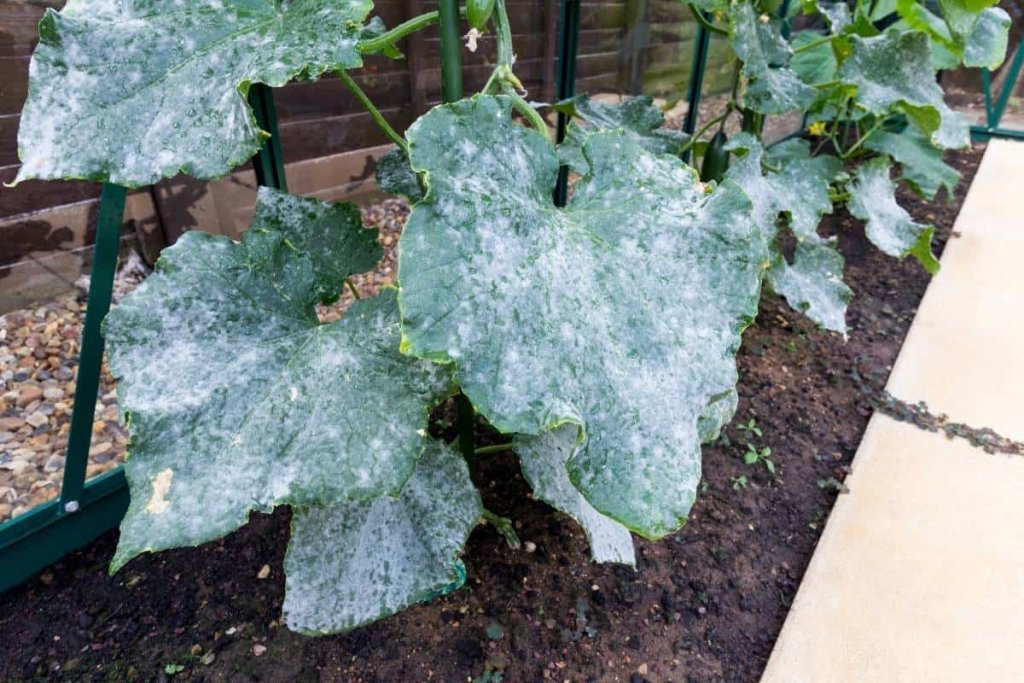Do you know why cucumbers are a favorite addition to any growing garden? Cucumbers are grown mainly because these veggies can be a great addition when you toss them into salads or raw veggie bowls.
The cucumbers also have a great deal of healing properties. For instance, when you have cucumber juices, your body’s temperature reduces, and you feel cool and hydrated.
You must also realize that cucumber is rich in antioxidants and an excellent source of Vitamin A. The cucumber plants are easy to grow and low on maintenance, too.
If you provide good growing conditions for them, you can get a lifelong harvest of rich and bountiful-tasting cucumbers.
In this online guide, we will discover why cucumber leaves are turning white and how to eliminate white fungus in plants.
Discover Why Cucumber Leaves Turn White

Have you ever noticed white spots or some powdery dew on top of a cucumber plant’s leaves? This is because of viral or fungal infections that get ingested on the plant, which can harm the healthier growth and well-being of cucumber plants.
Therefore, when you find powdery milk-like spots, this is a condition you must attend to as soon as possible. The powdered milk spots can cause diminished fruit yields and even lead to the plant’s untimely death.
Hence, white spots on cucumber leaves are a dangerous situation for the plant.
Several environmental factors cause cucumber leaves to turn white. It can be due to heavy acidity levels in the water you pour into the plant.
Other reasons include lack of sunlight, scalding issues, nutritional deficiencies, sun scalding, and involvement of pests or diseases on the plants.
These conditions may render the plant weaker, and you find heavy ingestion of white powdery mildew spots on the occurrence of leaves. In other words, the exteriors of the leaves look creamy white and scaly indeed. Immediate medication or treatment of the plant is what must be done to prevent the plant from dying!
Types of Diseases that Can Impact Cucumber Plants

Two main types of diseases can impact cucumber plants, and these are infections that can impact the overall growth and well-being of the plants. The diseases manifest in the form of viral infections, and they can impact the plant at any stage of its growth.
The infections cause the plant to provide poorer yields and eventually die out. Leaf spot diseases are the most common types of infections that can impact the growth of these cucumber plants. The leaves of the cucumber, therefore, turn white. The infections are named Cucumber Mosaic Virus and Powdery Mildew. Let us have a brief into each one of them:
1. Powdery Mildew
When you have a look at it, the powdery mildew is the most common infection that can cause the cucumber leaves to turn white. This is due to the presence of fungi that prevail in natural surroundings, which require a host wherein they can multiply and survive.
This type of fungi favors high daytime temperatures followed by night’s humid conditions. The fungi also thrive when you have low daytime humidity. Powdery mildew causes the exteriors of the cucumber leaves to be milky white.
Although the fungi do not kill cucumber plants, the fungal infection causes enough harm to the plants, and this reduces the overall harvest or yields of cucumber plants that have been impacted as such.
2. Cucumber Mosaic Virus or CMV
The Cucumber Mosaic Virus is known to have impacted more than 1300 species of cucumber plants. Aphids are the pests that spread the virus on these plants. When CMV has impacted the plant, the symptoms include loss of color, the appearance of distorted hues on the exterior shades of leaves, and mottling.
When you fail to treat the disease, the plant leaves will narrow down. This is in terms of their shapes or sizes. Thereby, the growth of the plant will be stunted. You may have to manually remove infected leaves and treat the plants to prevent aphid infestations to a considerable extent.
Neem Oil as a Remedy for Impacted Cucumber Plants
Neem oil may be available to you in pre-mixed bottles with lemongrass, eucalyptus, and lavender oils added to the concoction. These are essential oils that are added to the pre-mixes and are used as medications against some viral functions that appear on leaves. These oils work as great remedies that fight viral infections in cucumber plants.
But you must also understand one important fact. Neem is an ingredient that is too photosensitive indeed. Therefore, when you treat the infected cucumber plants with neem oil, the plant must be kept away from natural sunlight for at least 12 hours from the time of application of neem oil. Otherwise, the leaves may be subject to severe damage and discoloration, too.
Conclusion
We have seen several aspects of why fungus occurs on highly engaging cucumber plants and how white spots occur on the leaves, causing them to discolor.
We have also touched upon the commonly occurring leaf-spotting diseases that allow white spots to occur on healthy cucumber plants.
To take better care of these plants, you must make sure that the plant receives an adequate amount of water and sunlight throughout the day.
Natural insecticidal sprays must be applied periodically to get rid of those white fungi and get healthy growing plants.

